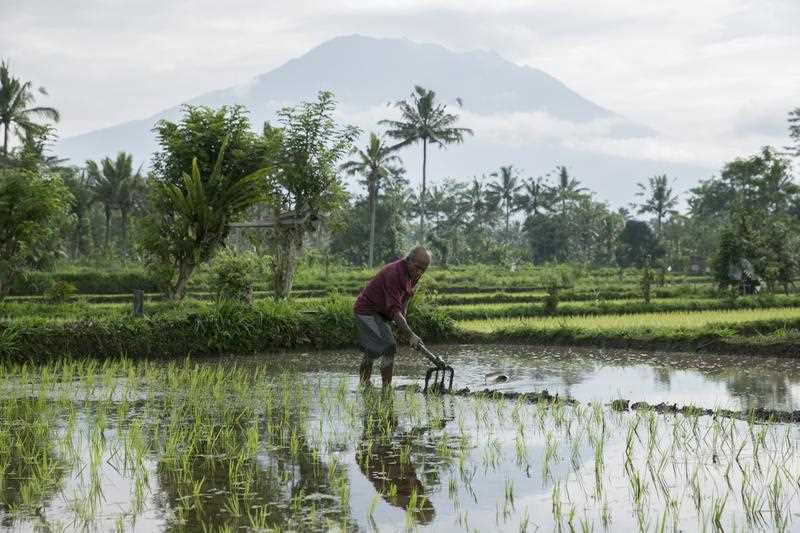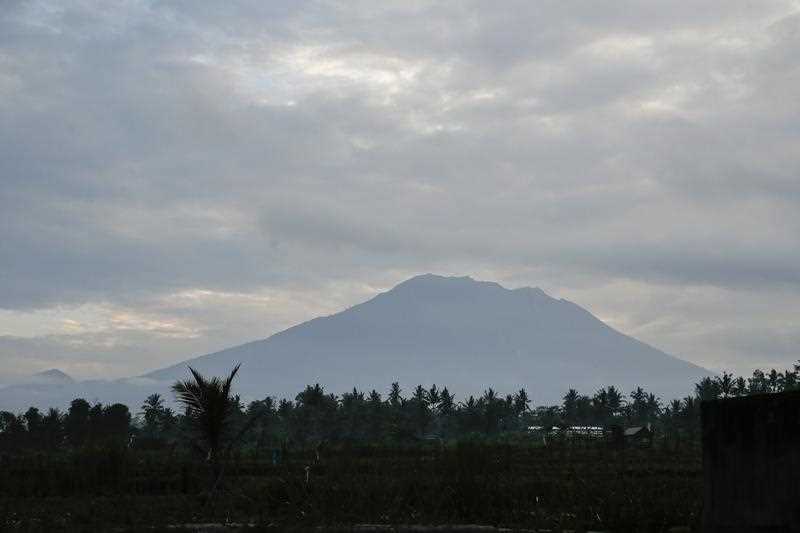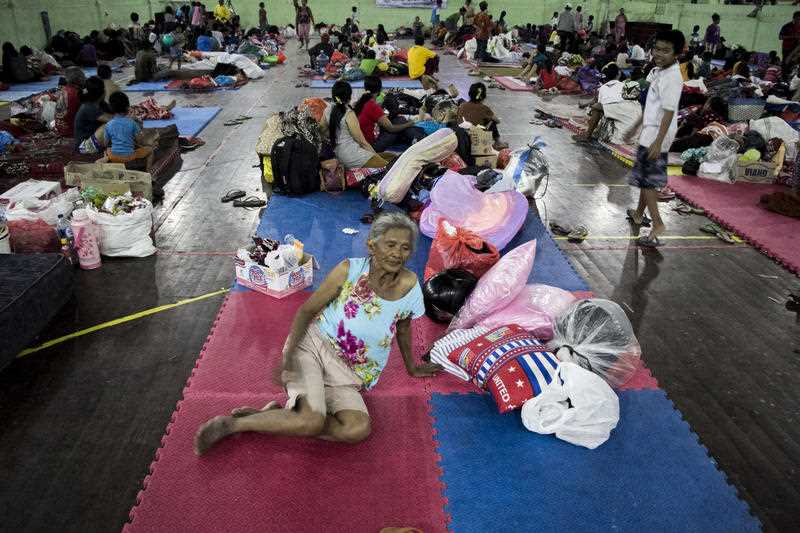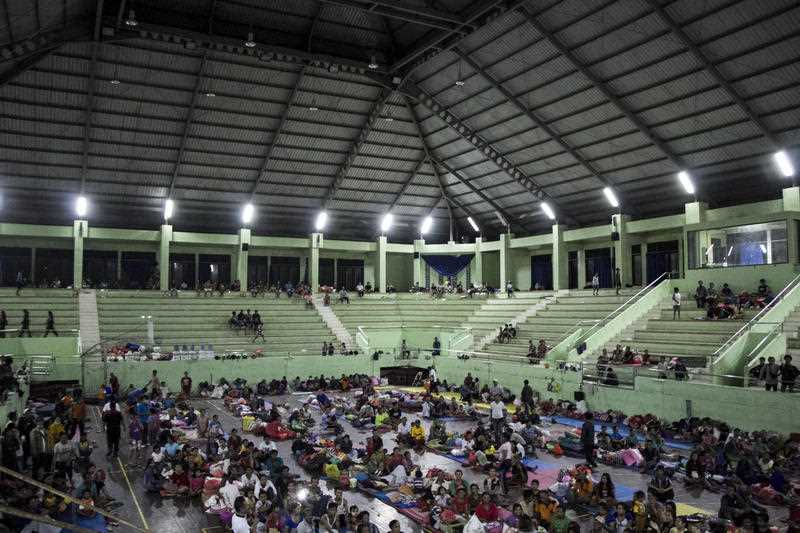Nearly 75,000 people have fled the Mount Agung volcano on the Indonesian tourist island of Bali with experts predicting an eruption is imminent and Virgin says it has had to take precautionary measures.
"Some of our Bali bound flights will be making fuel stops in Darwin. This ensures that if an eruption occurs while the aircraft is en route, we will be able to get guests back to their originating port safely and quickly," the airline said in a travel alert.
Meanwhile Jetstar is closely monitoring the situation in Bali and so far flights are operating as scheduled.
Despite these fears, Indonesian authorities say tourists continue to flock to Bali.
Arrivals at the Denpasar international airport remain stable at about 50,000 to 60,000 per day.
"As long as the volcanic ashes don't have any impact on Bali's airport, it will not be closed," an airport spokesman has told the ABC.
As a result of mass evacuations, more than 75,000 people have been displaced, according to the National Disaster Management Agency (BNPB).
The BNPB report an increase in the movement of magma to the surface of Mount Agung, prompting more deep volcanic earthquakes. Waskita Sutadewa, spokesman for the disaster mitigation agency in Bali, said people have scattered to all corners of the island and some have crossed to the neighbouring island of Lombok.
Waskita Sutadewa, spokesman for the disaster mitigation agency in Bali, said people have scattered to all corners of the island and some have crossed to the neighbouring island of Lombok.

Mount Agung is seen from a nearby village in Karangasem, Bali, Indonesia, 24 September 2017. The Center for Vulcanology of Geological Hazard Mitigation. Source: AAP
Indonesian authorities raised the volcano's alert status to the highest level on Friday following a dramatic increase in seismic activity. It last erupted in 1963, killing about 1,100 people.
Officials have said there's no immediate threat to tourists but some are already cutting short their stays in Bali.
A significant eruption would force the closure of Bali's international airport, stranding thousands.
"It's obviously an awful thing. We want to be out of here just to be safe," said an Australian woman at Bali's airport who identified herself as Miriam.
BPNB spokesman Sutopo Purwo Nugroho said hundreds of thousands of face masks will be distributed in Bali as part of government humanitarian assistance that includes thousands of mattresses and blankets.
Luhut Binsar Panjaitan, a senior Cabinet minister, said Sunday that the districts surrounding the volcano "must be prepared for the worst".
The National Disaster Mitigation Agency has praised the welcoming response of local communities on Bali to the flood of evacuees.
Thousands are living in temporary shelters, sport centres, village halls and with relatives or friends.
Some return to the danger zone during the day to tend to livestock.
BNPB spokesman Sutopo Purwo Nugroho said 14 tonnes of aid has been sent, including tents, blankets, mattresses and portable communications equipment.
Truck driver Wayan Suparta said he and his family left their village five kilometres from the mountain several days ago, bringing just clothes and blankets to a temporary camp in Rendang. The 35-year-old said he sold the family's cow because they did not know when they would be able to return.
The 35-year-old said he sold the family's cow because they did not know when they would be able to return.

Mount Agung is seen from a nearby village in Karangasem, Bali, Indonesia, 24 September 2017. Source: AAP
Officials have said there is no current danger to people in other parts of Bali, a popular tourist island famous for its surfing, beaches and elegant Hindu culture.
Hoaxes have proliferated online, with videos of previous eruptions in Indonesia circulated as current events at Mount Agung.
In 1963, the 3,031-metre Agung hurled ash as high as 20 kilometres, according to volcanologists, and remained active for about a year. Lava travelled 7.5 kilometres and ash reached Indonesia's capital, Jakarta, about 1,000 kilometres away. The mountain, 72 kilometres to the northeast of the tourist hotspot of Kuta, is among more than 120 active volcanoes in Indonesia.
The mountain, 72 kilometres to the northeast of the tourist hotspot of Kuta, is among more than 120 active volcanoes in Indonesia.

More than 15,000 people of Bali around the foot of Mount Agung, a volcano were were evacuated to GOR Swacepura refuge and 125 other places on September 23. Source: AAP
The country of thousands of islands is prone to seismic upheaval due to its location on the Pacific "Ring of Fire", an arc of volcanoes and fault lines encircling the Pacific Basin.
Tremors growing
The Indonesian Center for Volcanology and Geological Hazard Mitigation said the tremors had grown more powerful on Sunday.
"The mountain has not erupted until now. The earthquakes are happening less frequently but the magnitude is getting stronger," Gede Suantika, a senior volcanologist at the agency told AFP. The volcano agency's chief Kasbani said Mount Agung had a history of major eruptions that eclipsed recent episodes in Indonesia, including the 2010 eruption of Mount Merapi in Central Java that claimed at least 350 lives.
The volcano agency's chief Kasbani said Mount Agung had a history of major eruptions that eclipsed recent episodes in Indonesia, including the 2010 eruption of Mount Merapi in Central Java that claimed at least 350 lives.

More than 15000 people of Bali around the foot of Mount Agung, a volcano were were evacuated to GOR Swacepura refuge and 125 other places on September 23, 2017. Source: AAP
The 1963 eruption of Mount Agung killed more than 1,000 people and devastated many villages.
The 2010 Merapi eruption, which also forced hundreds of thousands of villagers to flee, was that mountain's biggest since 1872. However, it was 10 times smaller than Mount Agung's 1963 eruption.
"We hope this time it will not be that big, but we need to be prepared for the worst case scenario and prioritise vigilance," Kasbani told Metro TV.


